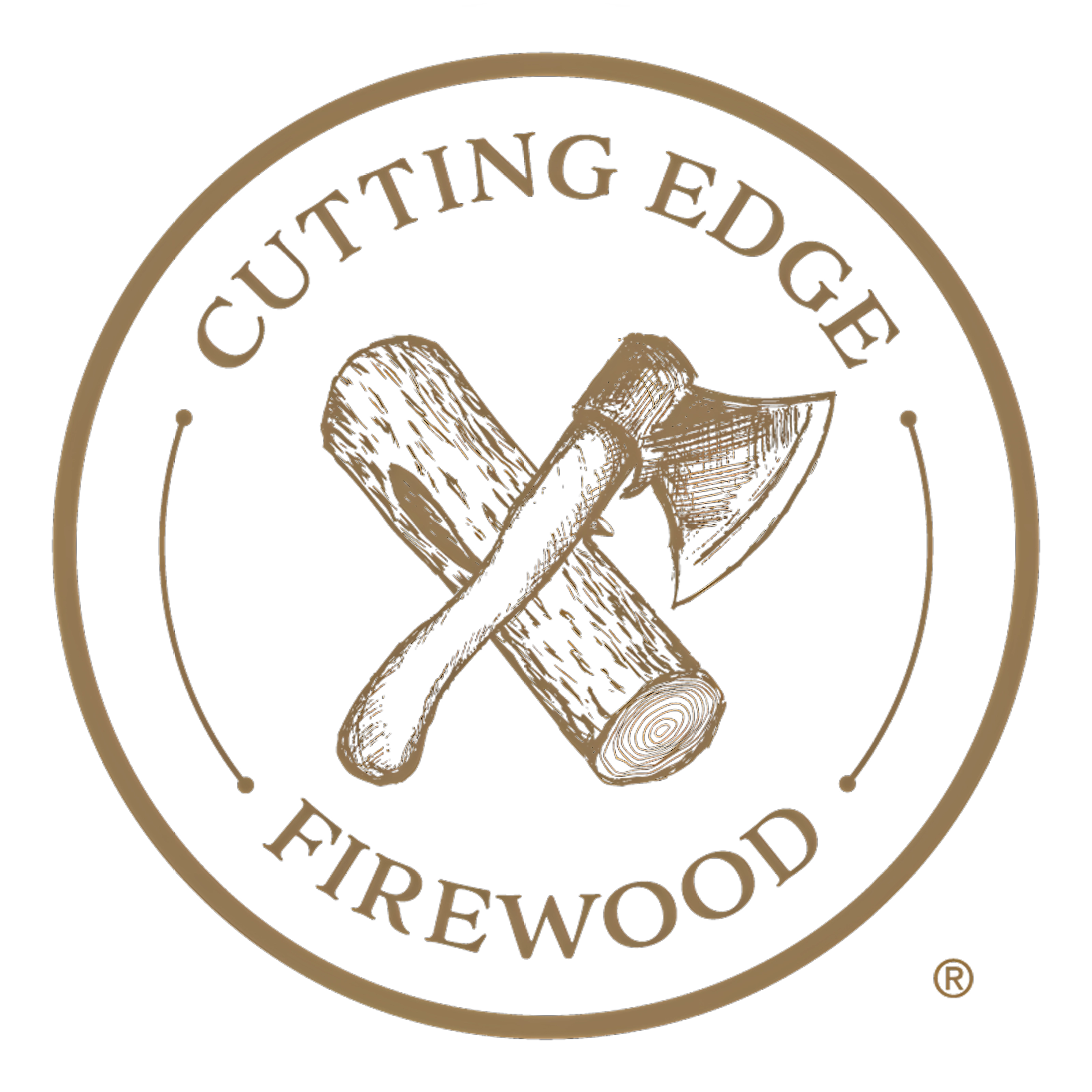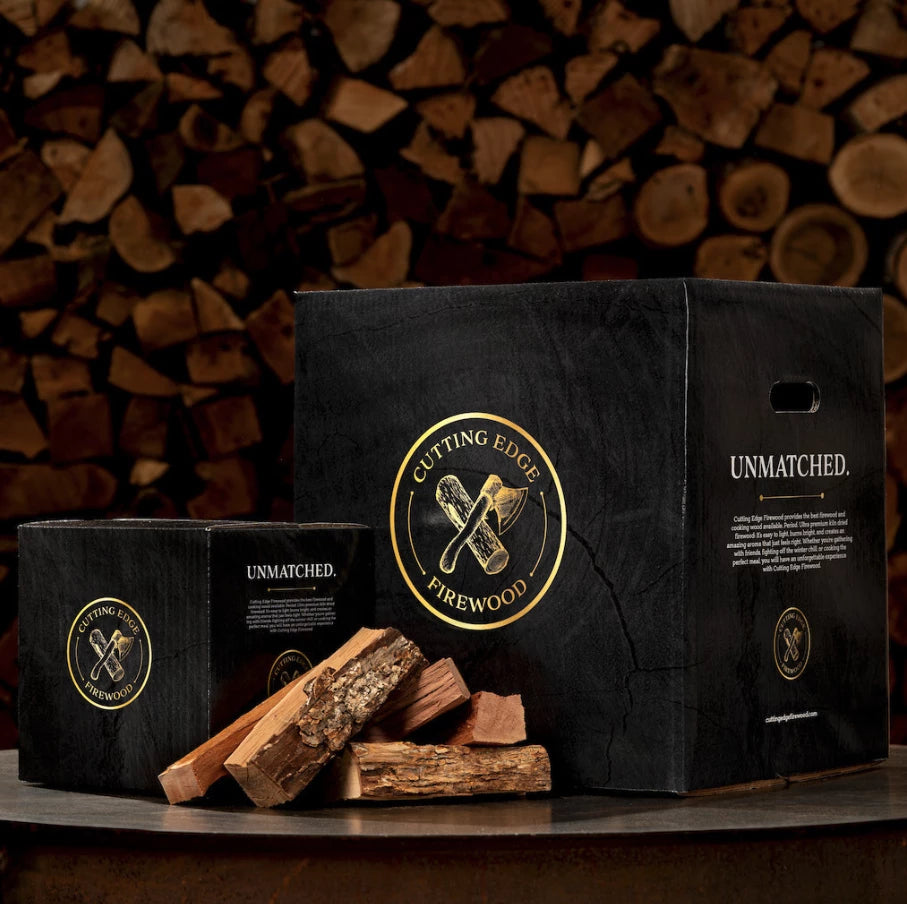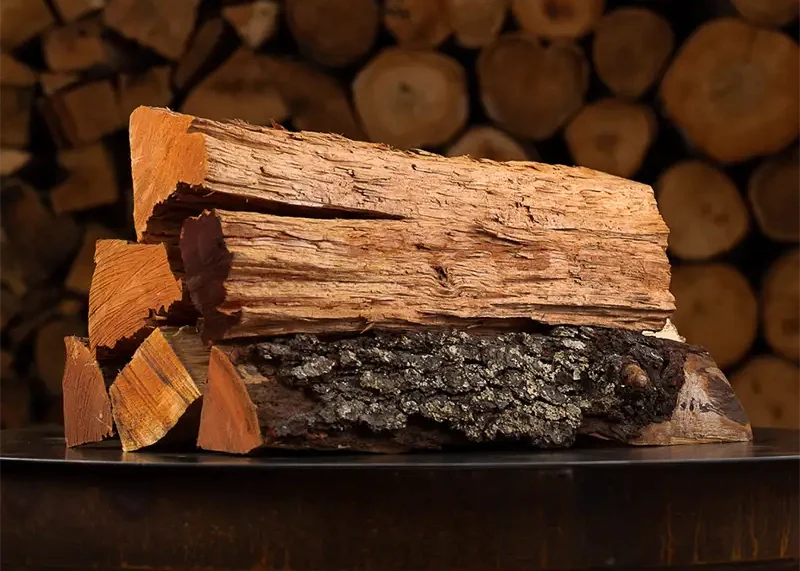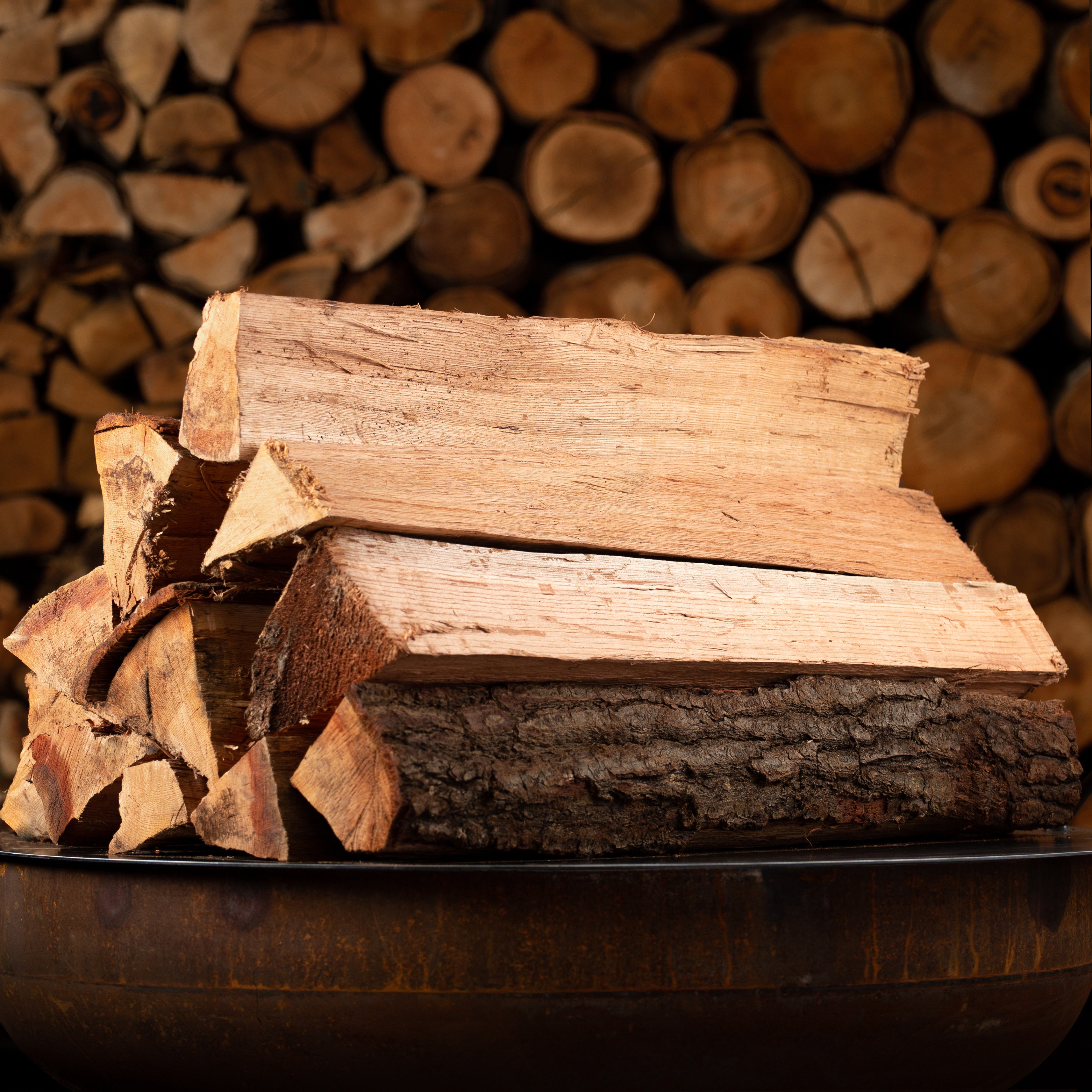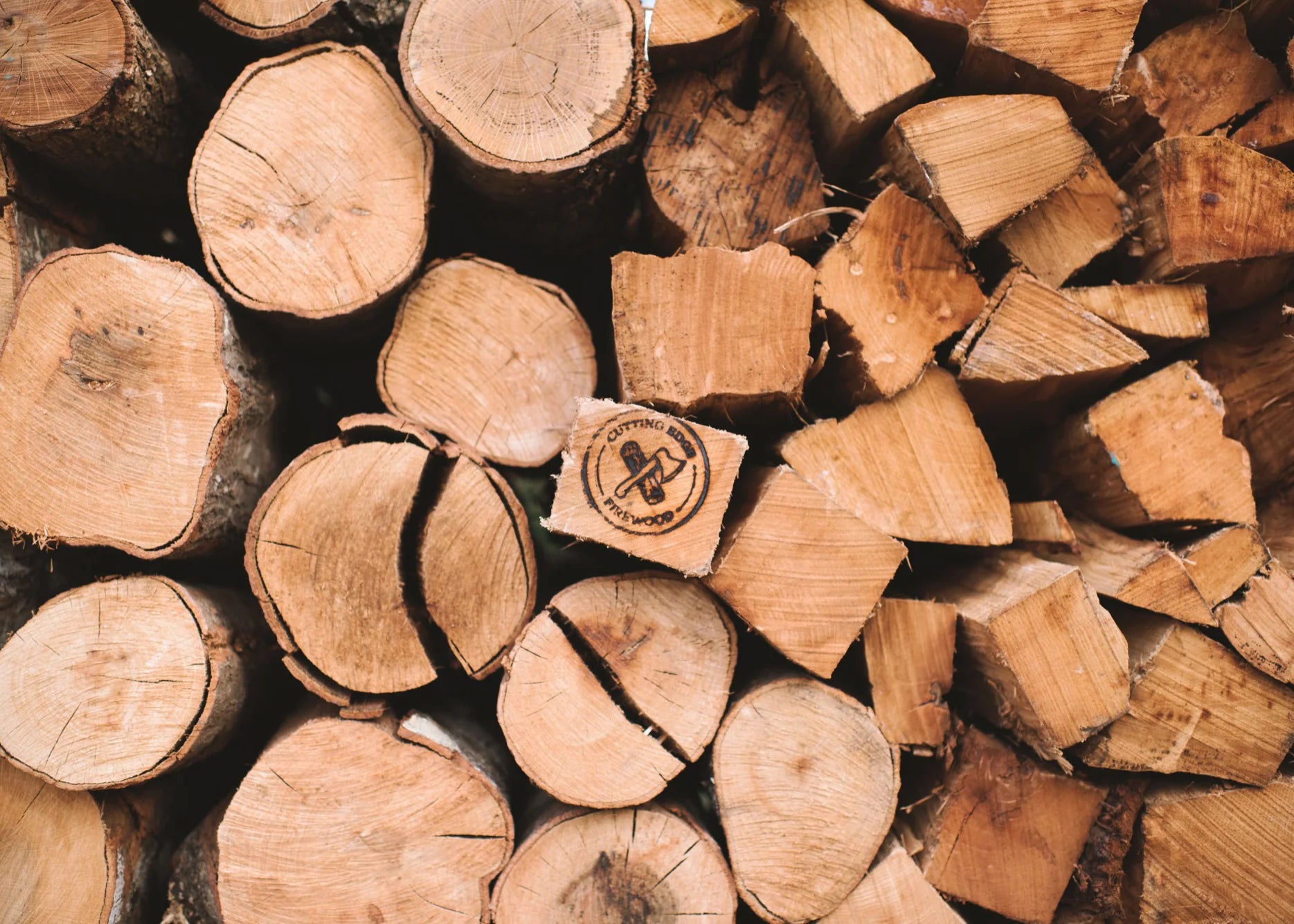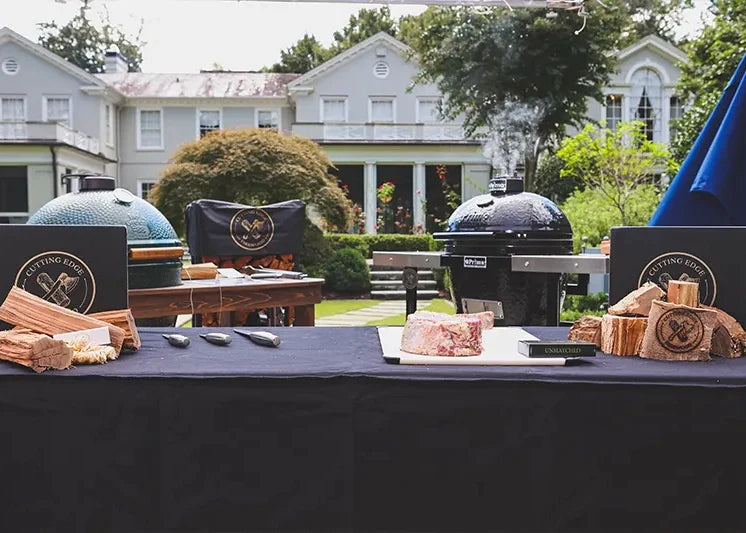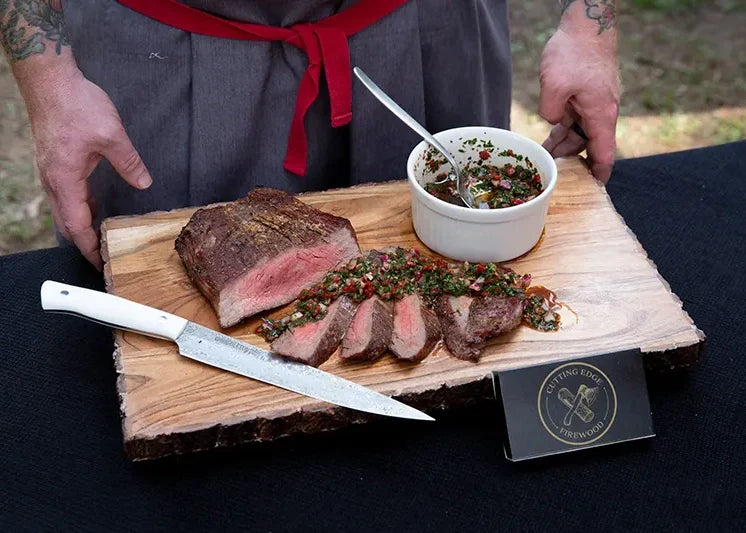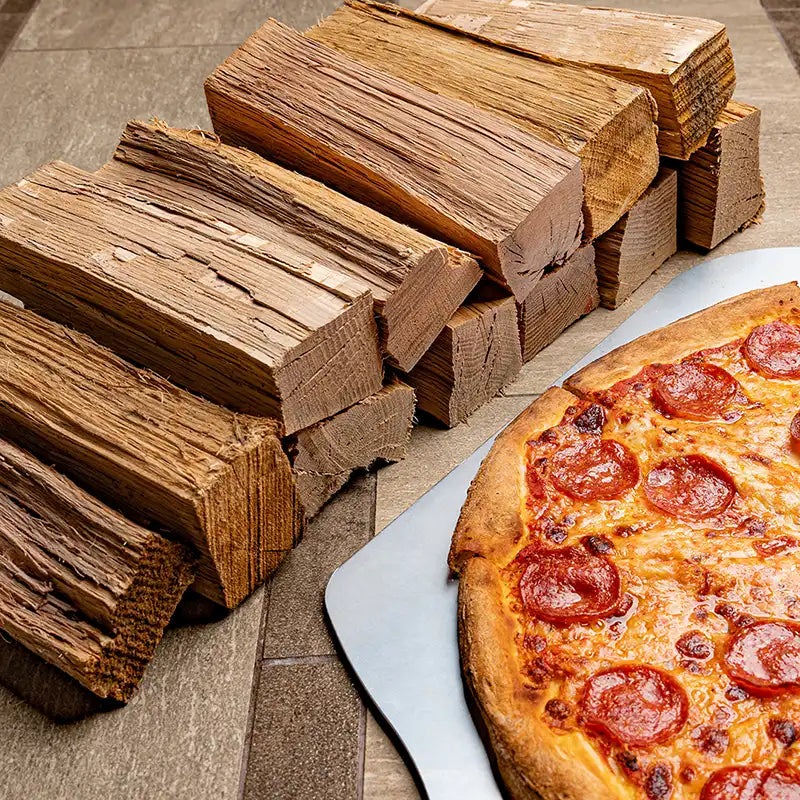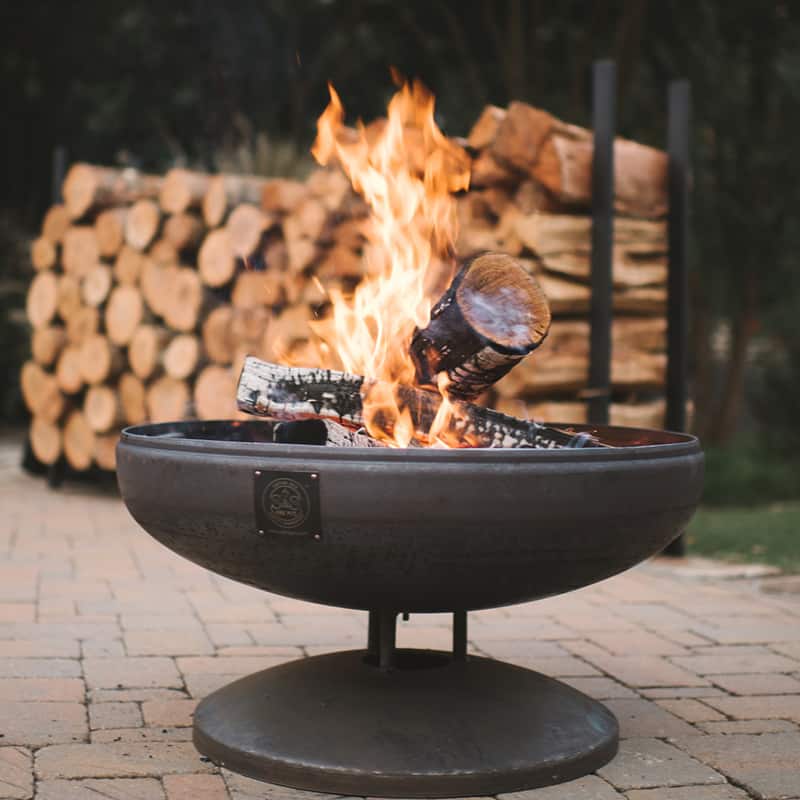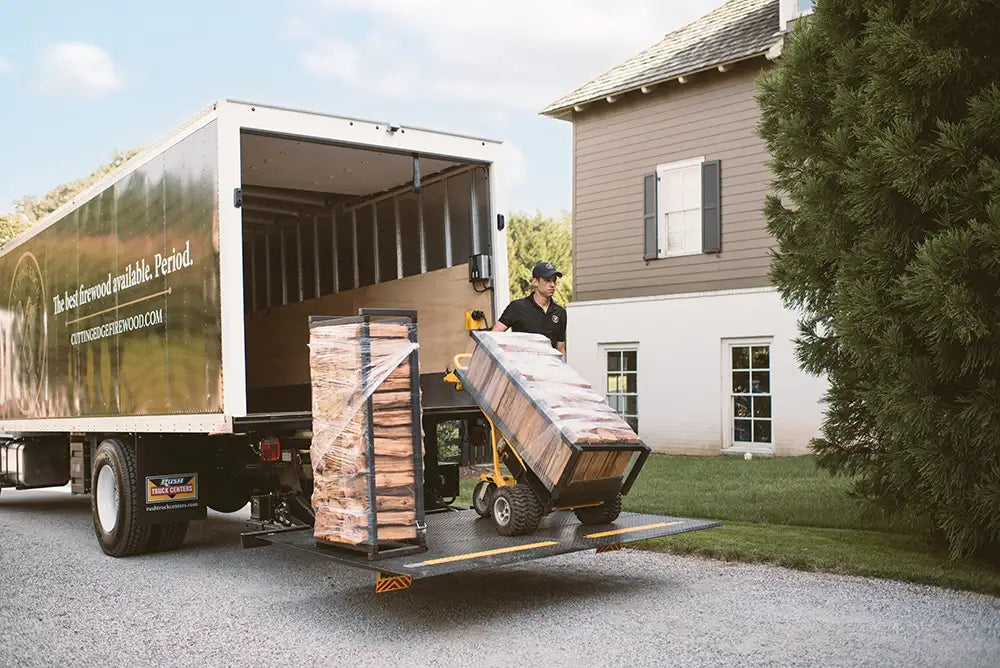Cooking with wood over an open flame may seem primitive, but when it comes to wood-fired pizza ovens, it is an art form. The unique flavors imparted by the wood and the intense heat of the oven create a culinary experience that is truly one-of-a-kind. Imagine biting into a perfectly crispy crust, with just the right amount of char and smokey flavor, topped with fresh, melted cheese and your favorite toppings. It's a taste sensation that cannot be replicated by any other cooking method.

Wood-fired pizza cooking is a gourmet experience.
It’s a fun social activity to do with friends and family. A way of elevating simple ingredients to new heights. A way to achieve crispy crust and evenly cooked toppings using a traditional method of cooking that has been used for centuries. And what’s not to like about using a cooking method that imparts a smoky, wood-fired flavor to the food?
Are you ready to take your wood-fired pizza game to the next level?

Choosing the right type of wood is essential for creating the perfect pizza with crispy crust and delicious, smoky flavor. Let’s take a look at how the right size and type of wood can be one of the most important ingredients for your next pizza party.
What is the best wood to use for my pizza oven?
The best wood to use for a pizza oven is hardwood such as oak, pecan or hickory that has been completely dried in a kiln. These types of hardwood burn hot! They produce little ash and are ideal for creating high temperatures to make some delicious pizza.
Sweeter hardwoods such as cherry, maple and apple can also be used but are not as common. They work better to supplement the fire by adding additional layers of flavor.
Softwoods such as pine should be avoided as they burn at a lower temperature and produce a lot of ash and creosote, which can leave an acrid, unpleasant taste.
What’s the deal with kiln-dried wood?
In the building industry, kiln-dried wood, or lumber, is wood that’s been dried in an oven to help prevent it from shrinking, warping, or twisting during your build. Removing the moisture also helps to prevent the wood from rotting and discourages pests like termites from becoming unwanted houseguests.
But not all wood is dried to the same specifications.
Some manufacturers only dry the wood minimally in an effort to get it to market sooner and at less cost.
Shrewd entrepreneurs have realized they can take this semi-wet blanket approach to kiln drying firewood, thus saving themselves some time (and money), and get their firewood on the shelves quicker. But quicker doesn’t mean better when it comes to wood for outdoor ovens.
Although lumber can often get by on being only partially dried, even partially wet wood is never a good idea for your pizza oven.
Like lumber, generic firewood may spend some time in the kiln but chances are it hasn’t been completely dried. This wood may have also spent months sitting outside, getting rained on, and potentially rotting from the inside out before it even gets a turn drying inside the kiln.
Unless the wood you’re using for cooking is completely kiln dried, chances are it will take more wood, more time, and more effort to make your fire and produce the same amount of heat. Less heat means less flavor and crispiness for your crust.
Why is hardwood a better choice for cooking in a wood-fired oven than softwoods?
Building a hardwood fire in an outdoor oven is like building a foundation for a vacation home. The extra effort spent now will assure you won’t have to go back and deal with issues later.
All wood-fired pizza ovens are designed to burn wood down to hot coals as a fuel source. The oven walls are thick and packed with insulative material that will retain heat.
Hardwood is dense. Like the oven itself, it may take a while to get hot. But when it does, it stays hot, making it perfect for outdoor ovens.

How do you build a proper wood fire in a pizza oven?
Building a proper fire in a pizza oven is a lot like building a gourmet pizza. It’s a fun activity that is borderline therapeutic. So consider having a cold beverage nearby and sharing the experience by bringing along a friend or two.
Start by stacking two or three layers of our miniature pizza wood (4-6 pieces) log-cabin style In the center of your oven and igniting it with a Firestarter.
Once lit, allow the wood to burn for about 10 to 15 minutes or until it’s fully engulfed and just starting to release coals. Then introduce one or two pieces of medium sized pizza wood to your fire. If you’re thirsty, now is a good time to have one of those friends refresh your beverage.
Starting the fire in the very center of the oven is important. This is where the majority of the cooking will be done, so you want to make sure the oven floor gets properly heat-soaked.
When your initial fire has burned down to mostly coals with some pieces of wood still intact, use your ash tool to move the fire and coals out of the middle to an area on the side or back of the oven. This is where they will remain during the cook.
From here, the amount of additional wood you add and time it takes to get the oven ready for cooking mostly depends on the size of your pizza oven.
Smaller and mid-sized ovens will maintain their heat and coals over time and usually only require a single piece or two of our miniature or medium sized pizza wood.
For longer cooks, or even introducing a dish in a dutch oven to your oven, adding one or two splits of our full sized pizza wood to your fire should provide the perfect amount of coals for cooking once the flames have died down and the coals are glowing red hot.
This isn’t necessary for portable pizza ovens.
Smaller, more compact pizza ovens like the Gozney Roccbox, or OONI make using our mini pizza wood even more convenient, because they are engineered to keep the fire rolling by keeping the flames, coals, and ash compartmentalized in a small compartment. (show image)
How long does it take to get your pizza oven preheated?
Smaller pizza ovens can preheat in about an hour, but large commercial ovens can take as many as six to eight hours to get properly heat-soaked and ready for cooking. The pizza oven’s shape is conducive to burning wood efficiently and transferring the heat evenly across your food. Very high quality wood can speed this time up and poor quality wood can slow this time down.
Every oven will take a different amount of time to get fired up and properly preheated. If you try and rush it, it will feel like it’s taking forever. So,embrace your inner caveman, be willing to adapt to how a newly-built live fire performs, and try to enjoy the experience of breathing life into your pizza oven. Side note, if you don’t want to wait a long time for the oven to heat up, purchase a smaller oven. The smaller the oven, the quicker it will heat up.
Why are hardwoods like hickory, pecan and oak the best for wood-fired oven cooking? Hardwoods are the best choice for cooking in a wood-fired oven for several reasons:
-
High heat output: Hardwoods, such as oak, pecan and hickory, burn at a higher temperature than softwoods, like lodgepole or pine. This is important for creating the sustainably high temperatures needed to cook a pizza properly.
-
Low ash production: Hardwoods produce less ash than softwoods, which is important for keeping the oven clean and building good flavors. Ash buildup can cause the oven’s temperature to drop, which can affect the taste of your food.
-
Long-lasting: Simply put, hardwoods burn longer than softwoods. This efficiency means you will burn less fuel over time and you won’t have to add wood as often.
-
Consistent burning: Hardwoods burn more consistently than softwoods so the temperature will be more stable.
-
Less creosote: Hardwoods have a lower resin content than softwoods, which means they produce less creosote. Creosote is a sticky, tar-like substance that can build up on the roof of your oven but also inside chimneys and flues. It’s unpleasant and can potentially make your food acrid, if not inedible.
Choosing the right wood for a pizza oven is crucial to maintaining optimal cooking conditions and ensuring that the pizza is cooked to perfection. Hardwoods are the best choice for wood- fired ovens as they burn hotter, cleaner, and longer than softwoods, which helps to create the perfect cooking environment for a pizza.
Why is using 100% kiln-dried wood important for your pizza oven?
Using 100% kiln-dried wood in a wood-fired pizza oven is important for several reasons.
-
Reduced moisture content: The Cutting Edge Firewood process of kiln-drying wood removes all of the moisture from it. This is important because if moisture is present it needs to be burned off and evaporated before the wood can burn at optimal efficiency. Our kiln-dried wood has less moisture than other offerings, so less energy is needed to generate heat for cooking. Using wood that is not completely dried will take longer to heat up and not burn as hot as our 100% kiln-dried wood. Also, wood with high moisture can actually temporarily lower the temperature of the pizza oven and ruin a good pizza.
-
Consistent burning: Kiln-dried wood burns more consistently than green or damp wood, which means that the temperature inside the oven will be more stable. This allows the dough to puff up and helps the pizza cook more evenly. This consistency is important so that both the top and bottom of your pizza cooks evenly and finishes cooking at the same time.
-
Reduced creosote: Creosote is a byproduct of incomplete combustion synonymous with trying to get wet or green wood to fully ignite in your oven. It occurs when you burn wood with a high moisture content and will stain both your food and your oven making everything bitter, including your attitude.
-
Longer burning time: Kiln-dried wood burns for a longer period of time than green wood, which means that you don't have to keep adding wood as often. This can be helpful if you're using a wood-fired oven for extended periods of time.
How does wood size affect cooking in a wood fired oven?
The size of the wood used in a wood-fired oven can affect the cooking in several ways:
-
Heat output: Smaller pieces of wood will burn faster and produce less heat than larger pieces of wood. Although ideal for getting fires started, additional small pieces of wood will need to be added more frequently during the cook to maintain the desired temperature of your oven.
-
Burn time: Larger pieces of wood will burn longer than smaller pieces of wood, but it can take a while for the flames to calm down and coals to develop. You won’t have to
add wood as often when using larger pieces, but when you do it may take longer before the next pizza gets cooking.
-
Temperature control: Smaller or even medium-sized pieces of wood can be more easily added or removed to adjust the temperature in the oven. Larger pieces of wood can take more time to add or remove and may not adjust the temperature as easily.
-
Ash production and management: Larger pieces of wood will produce less ash per piece than smaller pieces of wood because they do take longer to fully combust. This can make cleaning the oven a bit easier and less frequent.
What are some tips for Building a Fire with Kiln-Dried Wood in a Pizza Oven
When building a fire with kiln-dried wood in a pizza oven, there are a few tips to follow to ensure that the fire burns efficiently and safely:
-
Start small: Begin by adding a small amount of kindling and small pieces of wood to the fire. This will help to get the fire started and will make it easier to control the temperature.
-
Use a fire starter: To help get the fire started quickly, use a fire starter. They are so much better than a newspaper and ignite the kindling or mini pizza wood more easily.
-
Add larger pieces of wood gradually: Once the fire is established, add larger pieces of wood gradually, allowing the fire to adjust to the new fuel. You may need to add fewer large pieces than you think to get cooking.
-
Keep the fire well-ventilated: Make sure that the fire is well-ventilated so that it burns efficiently. More oxygen means more fire and more heat. Be sure your chimney is clean and the door or flue open until the fire is well established.
-
Use a thermometer: Use a high-quality infrared thermometer to monitor the temperature inside the oven. This will help you learn how your oven retains heat and help you to maintain a desired temperature.
-
Use the right amount of wood: It will take some practice so you don't overdo it or underdo it. You can check your oven manufacturer’s instruction for the appropriate amount, but too small a fire and your oven will be underpowered. Build too big a fire, and it can burn the outside of your pizza while leaving toppings underdone and the inside of the dough flat and undercooked. .
-
Leave plenty of holes: Place the wood in a way that allows for good airflow. By leaving plenty of holes or gaps around the logs, it will burn more efficiently.
8. Safety first: Always be aware of the fire and the heat. Sometimes the safe move with a hot fire is to take a break and allow the flames to subside. High temperature gloves, long handled tools, and a fire extinguisher are all smart tools to have nearby.
How does fortifying pizza wood with fruit wood and smoking wood chunks benefit cooking pizza and other foods in a wood-fired oven?
Fortifying pizza wood with fruit wood and smoking wood chunks or smaller splits can benefit cooking pizza and other foods in a wood-fired oven in several ways:
-
Flavor enhancement: Adding fruit wood and smoking wood chunks to the pizza wood can enhance flavor. For example, apple wood and cherry wood add a sweet and fruity flavor, hickory adds a smoky, bacon-like flavor, and mesquite wood adds a strong, smoky flavor. Pecan wood is underused when cooking in a pizza oven and worth considering. Although more subtle than other woods, the additonal nuances are pleasent and delicious.
-
Temperature control: It may take a little practice, but by fortifying the pizza wood with different sizes of wood, it can be easier to control the temperature in the oven. Different types of wood burn at different temperatures. Using a combination of woods may actually make it easier to maintain a specific temperature range in your oven.
-
Combining different wood allows for more complex and nuanced flavors: Using a combination of wood types allows for more complex and nuanced flavors, which can enhance the overall taste of the food.
-
Smoke infusion: The addition of smoking wood chunks to an established fire can infuse the food with a smoky flavor. It’s best to allow the flames to burn down and place the splits of wood adjacent to the heat where they will smolder and release smoke before eventually catching fire. A little goes a long way to season food.
So we’ve learned that using the right type of wood for a wood-fired pizza oven is crucial for achieving optimal cooking conditions and ensuring that the pizza is cooked to perfection.
We know that premium hardwoods, like oak and hickory, are the best choice for wood-fired ovens.
But you must insist the wood is 100% kiln dried and never left outside to rot.
In addition to it burning hotter, cleaner, and longer than wood from the hardware store, 100% kiln-dried wood reduces moisture content, produces less ash and creosote, and burns more consistently with a longer burn time.
Furthermore, fortifying pizza wood with fruit wood, smaller wood splits and smoking wood chunks can enhance flavor, control temperature, and allow for more complex and nuanced flavors.
Using common sense for safety and following the manufacturer's instructions is important to ensure safe and efficient use of the wood-fired oven. The only significant burn that should happen to you on pizza night is a burn to the roof of your mouth from biting into a slice too quickly before it cools.
Cutting Edge Firewood offers the best wood for your wood-fired pizza oven
- Carefully hand-selected and dried in a controlled oven
- Ensures the freshest and highest quality wood for your pizza oven
- Provides delicious, smoky flavor to your pizza
- Easy to use and predictable
Choosing the right size wood for your pizza oven
- For small portable ovens, use small 6" pieces of wood
- For midsize pizza ovens, use 8" pieces of wood
- For full size pizza ovens, use 16" pieces of wood
By sourcing wood from Cutting Edge Firewood, you’re already a few steps ahead of your friends who may be using wood that fell near the swing set in the last thunderstorm. It takes a quality fire to make a quality pie. Use the right wood for your oven and you’ll be deliciously surprised how good the pizza will be. Learn more about the benefits of kiln-dried firewood for pizza ovens, on our pizza wood page.

